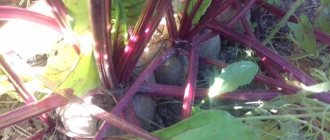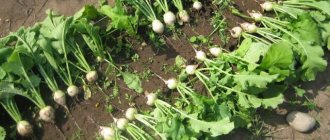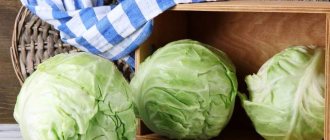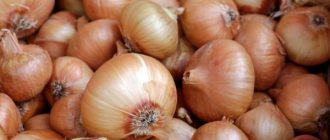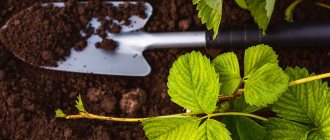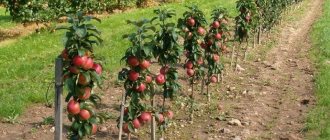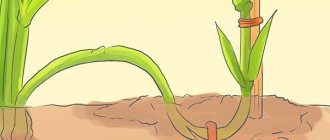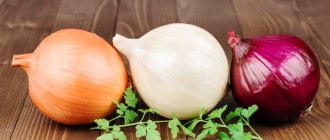Vegetables grown in the garden without the use of chemicals contain many vitamins and are very healthy. Red, green, white, black radish contains many vitamins, valuable elements, and has anti-inflammatory and bactericidal properties. It is especially useful in winter, during the period of vitamin deficiencies and outbreaks of colds. In order for vegetables to be stored for a long time, you need to know when to dig up Margelan, black, and green radishes from the garden in the fall of 2021 and put them away for storage and how to store them in an apartment or cellar.
Radish harvesting dates by region
The time for harvesting radish roots depends on the variety and weather conditions. It is necessary to know the variety of vegetables and ensure that they do not overripe:
- Mid-season autumn varieties are not suitable for long-term storage. About 80 days should pass from germination to digging.
- Late winter varieties are dug out from the garden about 100 days after emergence.
But even if the vegetables are not yet ripe and frost is expected, you need to start harvesting. Since the weather is unpredictable, it is difficult to give exact dates for digging up vegetables. When is it time to store radishes:
- in the Moscow region and other regions of the Middle Zone: from mid-October;
- in Siberia, the Urals, and the Far East, harvesting starts earlier than everyone else - from mid-September;
- in the southern regions - from the end of October.
As you understand, these are approximate dates. Be sure to rely on the weather forecast and the growing season of the variety you planted.
What varieties of radish are suitable for storage?
Early ripening (summer) varieties of radish are not suitable for long-term storage; they must be consumed immediately (or within several weeks). It is recommended to store early-ripening crops for a short period of several weeks in the same way as during winter storage (we’ll talk about this a little later).
Mid-season varieties can be stored for several months and are suitable for winter storage. For example, the variety of black radish “Winter Round Black”.
Late-ripening (winter) radish varieties are planted and grown just for long-term storage in winter. Subject to optimal conditions, they can be stored for up to six months. For example, the varieties “Skvirskaya black”, “Gaivoronskaya”.
Advice! The package with seeds should have o.
When to dig radishes in 2021
According to the Lunar calendar, harvesting root crops from the garden should be done on the waning Moon in the constellations Capricorn, Taurus and Gemini, and during the waxing Moon in the constellations Virgo and Capricorn. In this case, vegetables will be stored for a long time.
You will be interested to know: How to keep zucchini fresh for the winter: storage methods in the apartment
In 2021, favorable days for harvesting black, green, and Margelan radishes:
- 1, 2, from 11 to 15, 20, 21, 28, 29 August;
- September 7, 8, 9, 10, 25;
- October 4, 5, 6, 7, 8, 21, 22, 23.
It is very important to choose a sunny day for harvesting and dig up the radish roots from dry soil. But if it rains often, be sure to dry the vegetables well under a canopy.
Attention! Experienced gardeners advise digging up radishes as late as possible. The longer vegetables stay in the ground, the higher their concentration of nutrients will be, their resistance to disease and their shelf life will increase.
Storage methods
There are 3 options for places to harvest radishes. The benefits of each are revealed below.
Cellar and basement
Before placing vegetables here, you need to carry out preparatory work:
- Seal the holes. This applies to the ventilation system, windows and cracks. Rodents can enter the room through them.
- Disinfection. It is required when fungi and other harmful microorganisms are detected.
- Ventilation. You should also make sure the room is dry.
- Examination. You need to make sure that the temperature and humidity levels are correct. If it is too dry, place buckets of water in the corners.
For storage are used:
- Wooden boxes. The bottom is lined with a layer of dry sand, which is also used to fill the spaces between the vegetables.
- Polyethylene. Small holes are made in the bags for ventilation and wet sand is poured into them.
Balcony
An excellent option for those who do not have the opportunity to put vegetables in the basement.
Conditions:
- Design. Only a loggia is suitable, where it is warm and dry all year round.
- Temperature control. If it's too cold outside, the box of radishes is wrapped in a blanket. The harvest can be protected from the bright rays of the sun with a layer of foil. A thermometer left between the vegetables will help you maintain the appropriate temperature.
Refrigerator and freezer
You can leave the radish in the vegetable drawer for up to 1 month, but it will always be at hand and you won’t have to go far to get it or take a long time to defrost.
What are the rules:
- wash the fruits;
- dry with a towel;
- place in clean plastic bags with small holes;
- do not tie the bags;
- place on the bottom shelf or in a vegetable drawer (in the latter, packaging is not necessary).
It is forbidden to peel the fruits, otherwise they will quickly darken and lose their structure.
It is not possible to store radishes whole in the freezer because they take up too much space. But you can grate it to add it to dishes or prepare syrups in winter. But the benefits of such vegetables are somewhat lower.
For storage in the chamber, radish is packaged in bags for single use, since if it is re-frozen, it can deteriorate and completely lose its taste. It is better to set the temperature no higher than -15. In such conditions, the workpiece can be stored for up to 1 year.
Radish harvesting should be done no later than November. The fruits are cleaned from the ground, dried and sorted, and then placed for storage in the basement, on the balcony or in the refrigerator. Under good conditions, vegetables can retain their taste and beneficial properties for up to 9 months.
0
0
Copy link
How to dig up a radish correctly step by step with video
What you will need to harvest radishes:
- dry weather;
- pitchfork or shovel;
- gloves;
- sharp scissors or pruning shears.
It is better to dig up the fruits with a pitchfork. First, dig at some distance from the plant, and then pull out the radish by the tops. To avoid injuring or dirtying your hands, it is recommended to wear gloves.
The soil is removed from the root crops, after which the tops are cut off with scissors or pruning shears, leaving stems about 2 cm long.
Vegetables are laid out under a canopy so that they dry thoroughly. If the weather is damp and dry days are not expected, drying is best done in a well-ventilated area.
Collection rules
To improve the shelf life of root crops and increase shelf life in winter, it is necessary to correctly and promptly remove them from the garden bed and prepare them for storage in the cellar (balcony, refrigerator). Experts in the agricultural sector recommend following simple rules:
- Carry out cleaning in dry weather without wind or precipitation, having studied the forecast for several days in advance.
- Vegetables should be carefully dug up and not pulled out of the ground. To do this, you should make a careful dig with a sabot or shovel.
- Shake off the extracted specimens from soil residues and place them on the bed to dry.
- Inspect each head for any defects or damage.
- Select whole healthy root vegetables and send the rest for processing.
Before storing vegetables, they need to be thoroughly dried, otherwise they will quickly become covered with a layer of mold indoors. To do this, they must be moved to a ventilated place where there is no direct sunlight. Ideally, it will be a canopy.
It is not recommended to leave the tops during storage, since they release moisture and continue to consume nutrients from the fruit, increasing their viability. Therefore, it should be cut off, leaving columns 1-1.5 cm high. Do the same with the roots if they are too long, damaged or dried out.
How and where to store radishes
The best conditions to preserve green, black, Margelan radish from winter until spring:
- temperature within +3..+4 degrees;
- air humidity – 85%;
- Can be stored together with potatoes and carrots.
You will be interested to know: 3 best ways to store garlic in winter in a city apartment
With proper preparation and storage conditions, fresh vegetables will be stored for about 9 months.
A cellar or basement is best for storage. In the absence of such storage facilities, radishes are stored at home in winter: on a glassed-in loggia or balcony, in the refrigerator.
In the cellar or basement
To store radishes in winter, boxes with holes and wet sand are prepared in storage. Sand is first poured into the bottom of the box, then vegetables, and sand again. The sand must be wet so that the root vegetables retain their juiciness.
Instead of a box, you can use wooden barrels.
You can also store it in the cellar in plastic bags with holes. They are laid out on shelves.
The storage must be ventilated, so take care of ventilation. If the humidity is low, place containers of water.
In a refrigerator
Not everyone has a basement and cellar. In this case, you can put the radish in the refrigerator for storage, after placing each root vegetable in a bag with slots and tying it tightly. Vegetables are stored in the vegetable department of the refrigerator without loss of quality for about a month.
To prevent the radish from becoming soft and to keep it in the refrigerator longer, you can wrap it in cling film. Each fruit must be wrapped in film so that no air remains. The petiole should also be wrapped.
Storage conditions
There are several recommendations that will help preserve the freshness and benefits of radishes for a longer period.
What to provide:
- Mode. The air temperature should not fall below 0 if the radish is indoors. Humidity level – 85%.
- Neighborhood. You should not leave the harvest together with garden fruits, this will spoil their taste. It is better to place vegetables next to carrots or potatoes.
- Regular checks. The fruits should be inspected every 2-3 weeks. If they become damaged, you need to consume the damaged specimens as quickly as possible.
How to prepare forged radishes for winter storage
You cannot store radishes immediately after harvesting, otherwise they will quickly become unusable. In order for the crop to survive the winter safely, it is necessary to carry out some preparation measures.
How to sort root vegetables after harvesting
Immediately after you have dug up and trimmed the tops of root crops, you need to sort them. The sorting procedure is necessary in order to store only whole, strong, good radishes.
Carefully inspect each root vegetable. Instances with damage (cracks, dents), with rotten or frozen areas, signs of diseases and pests, and limp root crops must be rejected and should not be stored under any circumstances!
Rejected root crops that have no traces of disease or pest damage, for example, with mechanical damage, can be immediately consumed or canned.
But all healthy, whole radishes are sent for storage. But before sending it for storage, it must be dried! We'll talk about this in the next paragraph.
How to dry root vegetables before storing
Drying the harvested crop is the most important stage in preparing radishes for storage. If you ignore this step and plant vegetables in this form, then the root vegetables can quickly become moldy over the winter and become unfit for consumption!
The place for drying root vegetables must be shady, well ventilated, and dry! Do not dry vegetables in the sun!
After this manipulation, you can store the radishes for winter storage. However, this cannot be done abruptly; if you immediately send it from the street to a cellar or basement, the root crops will be subject to a sharp temperature change, and this will have a bad effect on keeping quality. Therefore, before planting, be sure to move them for several hours to a cool, dark place, which is colder than in the garden, but warmer than in the cellar.
The effect of temperature on vegetables
Seeds begin to germinate at +1…+2°C. The seedlings tolerate frosts down to –4°C. Prolonged low-temperature conditions lead to the appearance of reproductive organs in radishes - flowers and inflorescences, from which fruits and seeds are subsequently formed.
Attention
Due to elevated temperatures above zero, root crops may grow flabby and will not be stored well, and due to low temperatures, bolting may begin.
When to collect
Depending on the timing of ripening, black radish is divided into summer, winter and autumn varieties. Having clearly determined which variety the root crop belongs to, you can calculate the period when you need to dig up the crop.
Summer varieties, characterized by early ripening, are sown at the end of April. They can be removed from the soil at the beginning of summer. First of all, root crops are collected, the diameter of which has reached 4 centimeters.
The collection procedure is carried out in stages. Early root vegetables are usually stored in the refrigerator, with the green leaves and small roots removed. Shelf life is about 3 weeks.
Autumn varieties have medium ripening periods. It is better to dig them up between the beginning of August and the end of September. Vegetables are placed in sand and can be stored in this form for a month and a half.
Winter varieties take the longest to ripen, but can also be stored for quite a long time. The main condition is to allow the fruit to fully ripen. Vegetables that are picked unripe are stored very poorly and do not last long. However, you should not allow it to “overripe”, as such radishes become empty and tasteless.
When to harvest black radish? The entire crop must be harvested before the first frost. After all, frozen fruit loses all its useful characteristics and cannot be stored in principle.
When to remove black radish from the garden, timing and storage
Today, domestic gardeners do not grow black radish very often, which is explained by the piquant, pungent taste of the root vegetable. Typically, the vegetable is used as an ingredient for various salads, as well as as an addition to main courses. However, as a folk remedy for cough, no other crop can compare with radish. Everyone has ever tried this “medicine”: a root vegetable with honey, or a compress of grated vegetables. After using this “drug”, the cough disappears quickly. Therefore, the root vegetable is most in demand during the cold season, the cold season. But for winter treatment, you need to harvest the crop on time and properly prepare it for storage.
